The Water Mills project Documents
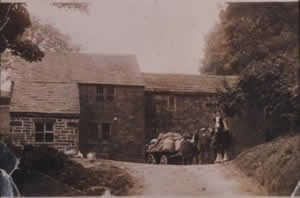
As part of our research into water mills, Leekfrith Bygone Days Society visited Dains Water Mill in Upper Hulme, in July 2008. Our tour guide was Brian Ball, who, among other members of his family past and present, were responsible for restoring the mill from dereliction to its original state in 2004.
See photos of the renovated mill
Hear Brian describe the drying house
There had been a mill on the Back Brook waterway prior to 1600 which was thought to be called Gent's mill but this was demolished and the site let to John and William Hind who rebuilt the mill, finishing it in 1602. In 1610, the tenant of the mill was a John Deane, and it is thought that the mill name is a corruption of that name over the years. However, there are other meanings of the word 'Dain', one of which is thought to be 'Dead Ground', meaning that it is unsuitable for growing crops or grazing.
During the visit, Brian kindly opened the sluices so that we could see the big water wheel turning, and majestic it is! He also lent the society some old records and photographs, some of which recorded the progress of the mill from dereliction to its original state. There were also some much older and taken possibly in the 1920s (see below.) We were also able to study an old ledger which gave us some interesting information.
In 1929, the mill was in full swing, and we were able to establish that it had 154 account customers, all of whom seemed to be from the Leekfrith district. One of the largest was New Grange Farm which was then in the name of William Brown. From the ledger, it was clealy a thriving and very active farm, but sadly no more, as this was one of the farms submerged by Tittesworth reservoir in the 1950s. The main product supplied is descibed in the ledger as "Rd. Corn", and other products to varying degrees were described as "Nuts", "Sharps", "Ind. Meal", "Bran", "Kositos" and others to a lesser degree. Our farming members may be able to translate for us. Interestingly, almost all the main products sold at the time for around 50 pence per cwt., some slightly more, some slightly less.
The total tonnage handled in the month of October 1929 was 30.9 tons, of which "Rd. Corn" amounted for 9.6 tons. During September and October of that year, the cash turnover was £398 and £375 respectively. One interesting entry was the only one we could find for 'coal', which must have been obtained as a special order for Frank Stonier of Withens, and 1cwt was 2s 3d., which equates to £2.20 per ton. At the end of October, 2008, that same ton of coal would cost you £220. However, some things never change because you would not believe the credit some of the farms took before paying their accounts. The isolated one paid within a couple of months, but the majority took significantly longer, and 6 months was quite common, many even longer!
In 2006, permission was granted for the mill to be used as holiday dwellings although at this stage that has not happened, but this is something for the future. It is now a magnificent building and a credit to all concerned in its renovation.
HOW DANES MILL'S NAME MAY HAVE ARISEN
This page on how the name of Danes Mill may have arisen was found by Alan Weeks in Miller's Olde Leeke vol II. It describes burial barrows in the area and the discovery of an ancient gold broach. click
The Water Mills project Photographs
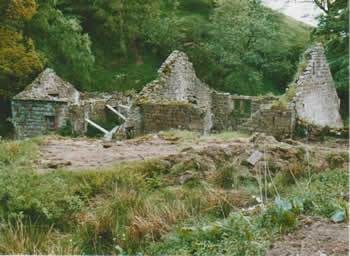
Dains mill before work started
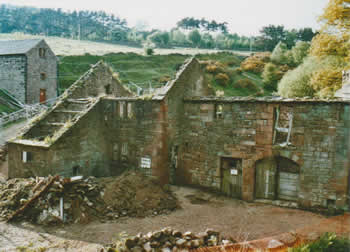
As work started
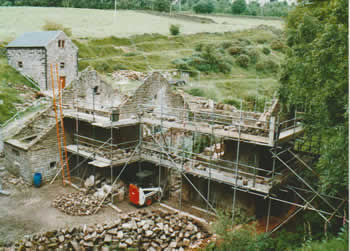
Work in progress
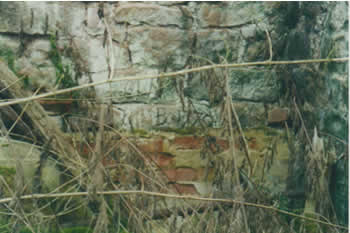
Very old graffiti
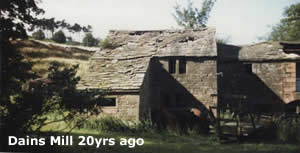
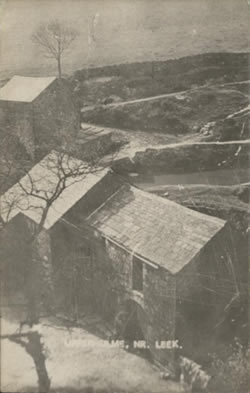
Dains Mill earliest photo







